March 19, 2024
All You Need To Know About The Festival Of Colours
CM Content Team
Holi is the festival of colours that celebrates goodness and spring's arrival. This 2 day Holi celebration also marks the victory of good over evil. It signals the end of winter and welcomes the onset of spring, along with a promising harvest season. Celebrating this colour festival start off on the evening of Purnima with Holika Dahan, which falls in the Hindu calendar month of Phalguna and ends in the evening of Holi.
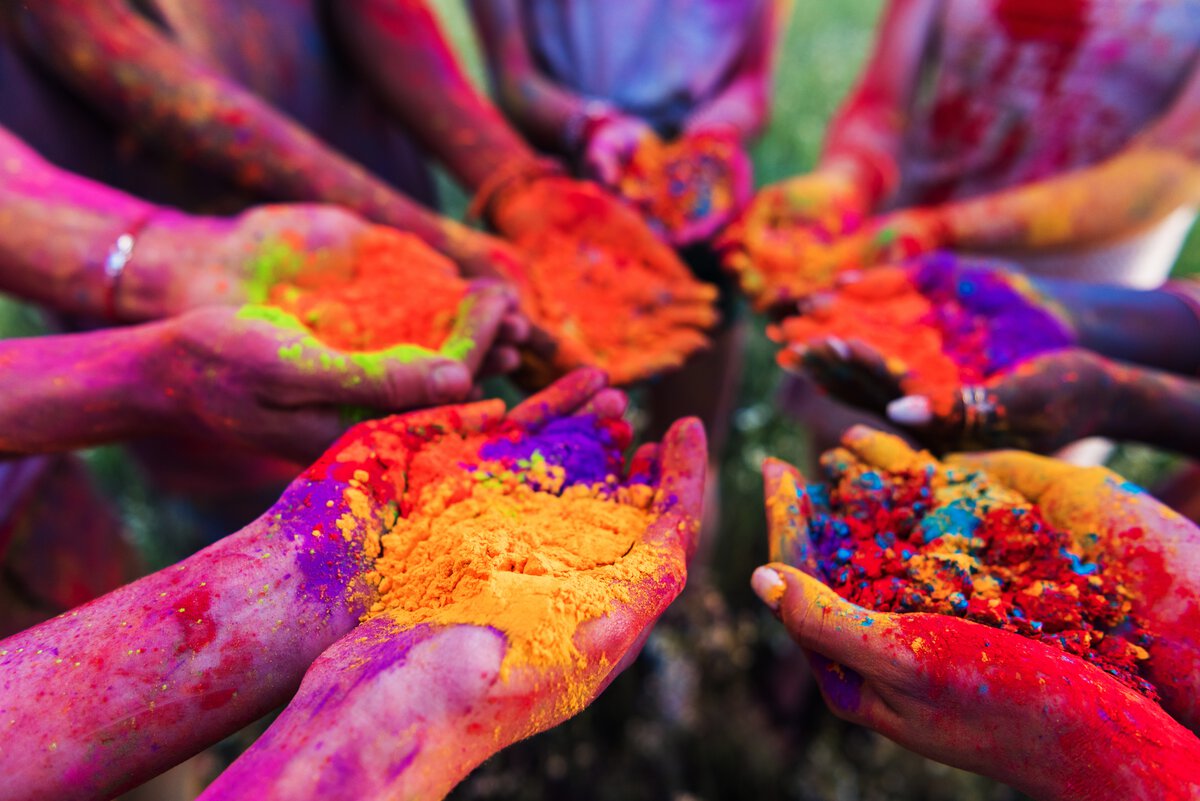
Here is all that you must know about this vibrant Festival of Colours.
Holi is a festival that follows the Hindu lunar calendar, and its date changes every year.
Holi- 14th March, 2025
Holika Dahan- 13th March 2025
On the evening of 13th March 2025, people gather to light a bonfire, known as Holika Dahan. This ritual is based on the legend of Prahlad and Holika, where devotion triumphed over arrogance. According to tradition, people offer coconut, wheat grains, and other sacred items into the fire, seeking blessings for prosperity and protection from negative forces.
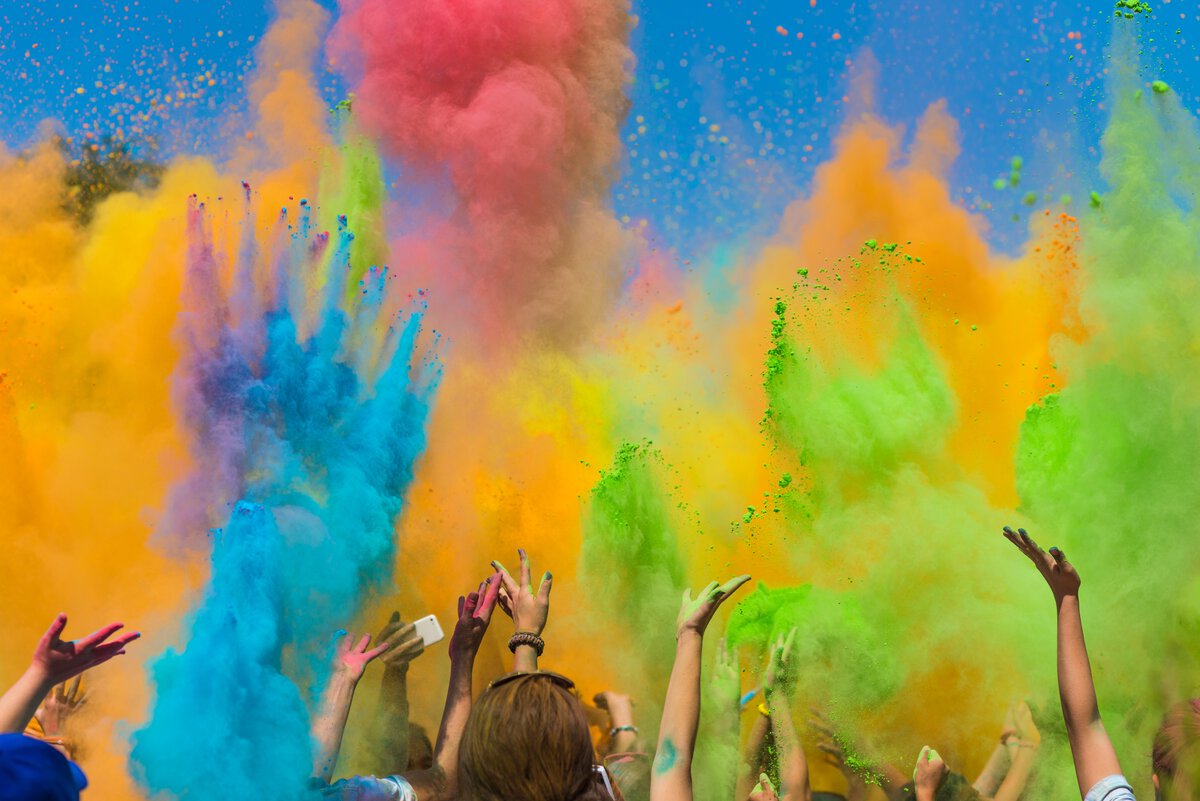
On March 25, 2024, Holi, the vibrant and joyous festival of colours, will be celebrated with great enthusiasm. This two-day celebration signifies the arrival of spring and the victory of good over evil. People from all walks of life come together to partake in the festivities, throwing coloured powders, singing, dancing, and indulging in delicious foods.
Holi holds significant religious importance for Hindus and is one of their most revered festivals. Celebrated over two days, the first day, known as Choti Holi, involves lighting bonfires and worshiping Holika. People perform rituals such as circumambulating the bonfire seven times before the ceremonial Holika Dahan at night.
The second day, called Dulhendi or Rang wali Holi, is when the real fun begins. People play with colors and water, visiting each other's homes to smear colored powders or Gulaal on each other's faces. They exchange sweets, snacks, and joyful music fills the air as they revel in the colorful festivities with their loved ones.
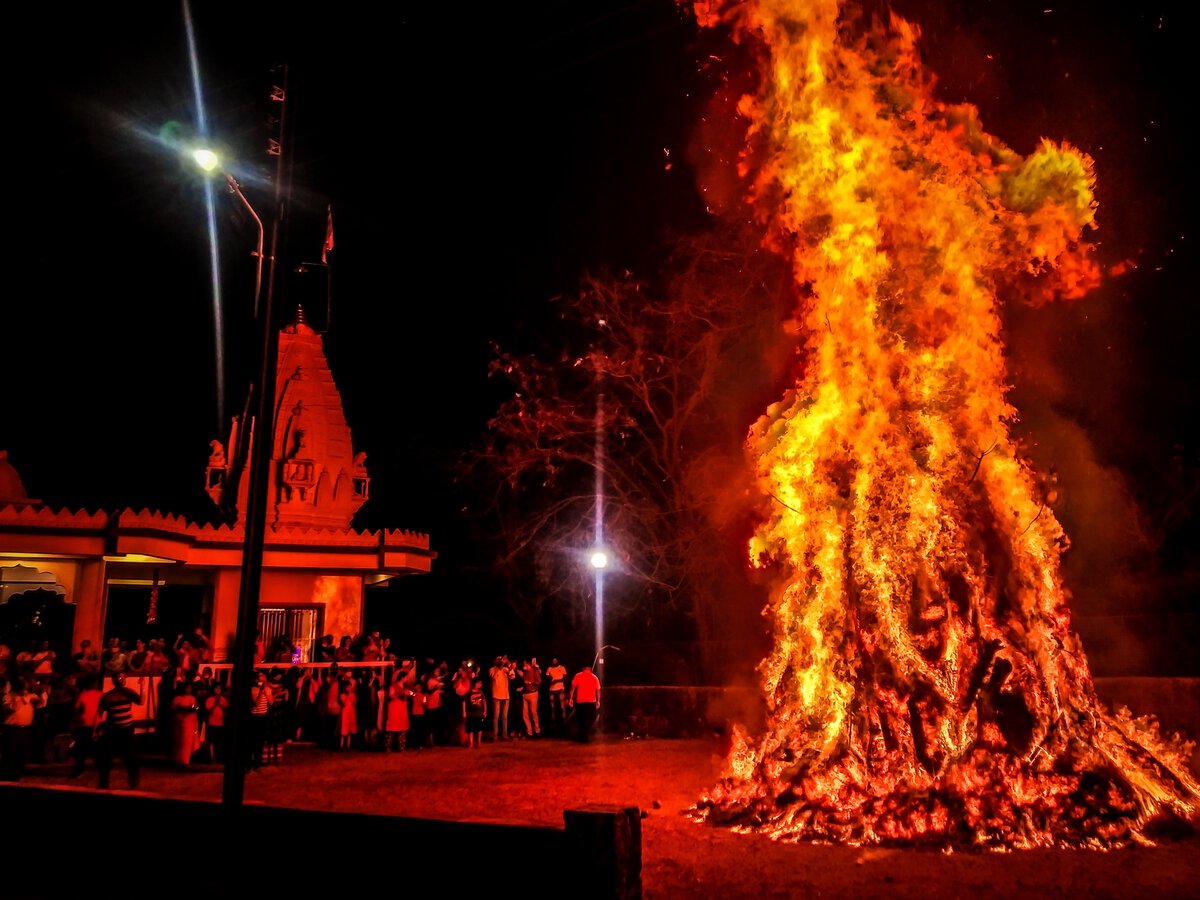
The Legend of Prahlad and Holika- One of the most well-known stories associated with Holi festival of colours is the tale of Prahlad and Holika. According to Hindu mythology, Prahlad was a devoted follower of Lord Vishnu, but his father, King Hiranyakashipu, wanted to be worshipped as a god. When Prahlad refused, Hiranyakashipu’s sister, Holika, who was immune to fire, sat with Prahlad in a burning pyre to destroy him. However, by Lord Vishnu’s grace, Holika was burned, and Prahlad emerged unharmed. This is why Holika Dahan is celebrated on the eve of Holi—to remind people that evil never wins over righteousness.
Krishna and Radha’s Colourful Love Story- Another beautiful legend behind the Holi festival of colours is the playful love story of Lord Krishna and Radha. As a child, Krishna was worried about his dark complexion and wondered if fair-skinned Radha would accept him. His mother, Yashoda, playfully suggested that he apply colours on Radha’s face. When Krishna did so, Radha and her friends responded by playfully throwing colours at him, and thus, the tradition of playing Holi with colours was born. Even today, Holi in Mathura and Vrindavan, is celebrated with great enthusiasm, recreating this divine love story.
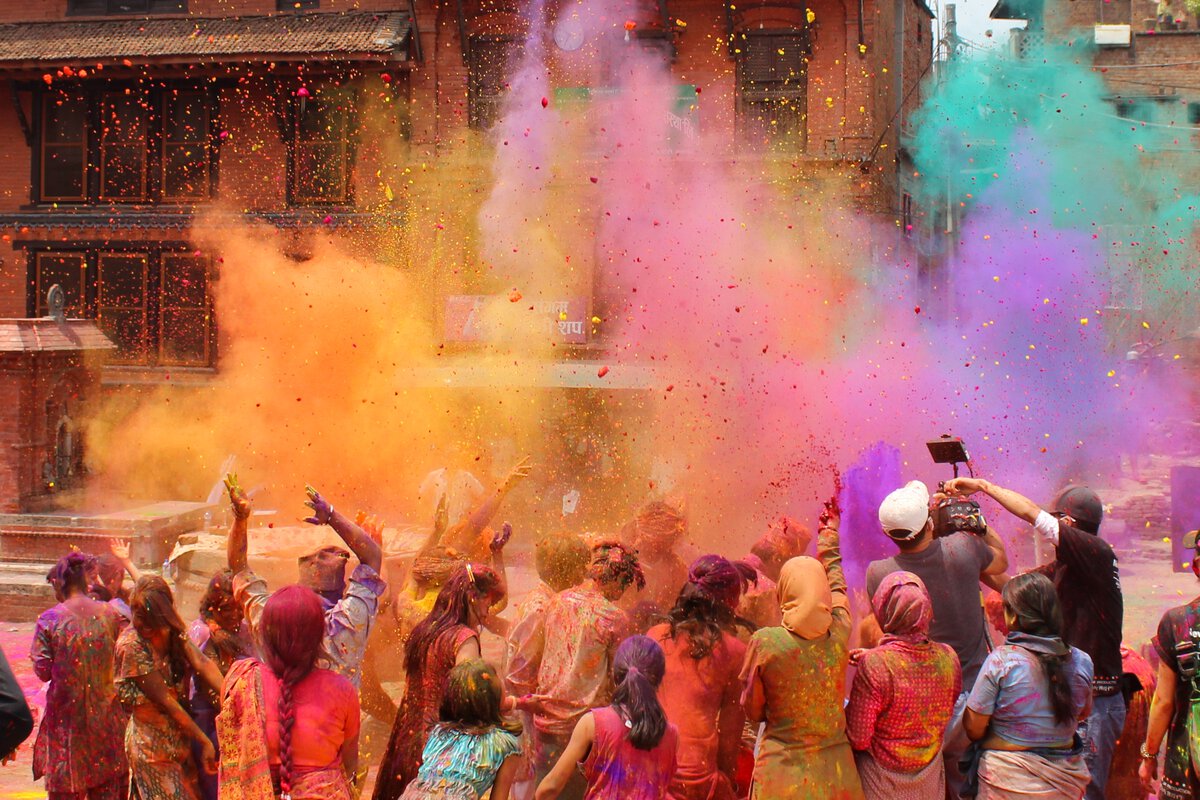
Holi earns its title as the "Festival of Colors" due to a cherished tradition where people joyously throw brightly colored powder, known as "gulal," at each other. This spirited activity, known as "playing Holi," is a central ritual of the festival. The colors used during Holi are typically derived from natural materials like flowers and herbs, each imbued with symbolic meanings.
For instance, red symbolises love and fertility, while green signifies new beginnings and growth. These colors are believed to mirror the diverse emotions and moods expressed by people during the festival. Overall, Holi's vibrant and jubilant atmosphere, characterised by the playful exchange of colors, has rightfully earned it the moniker of the "Festival of Colors."
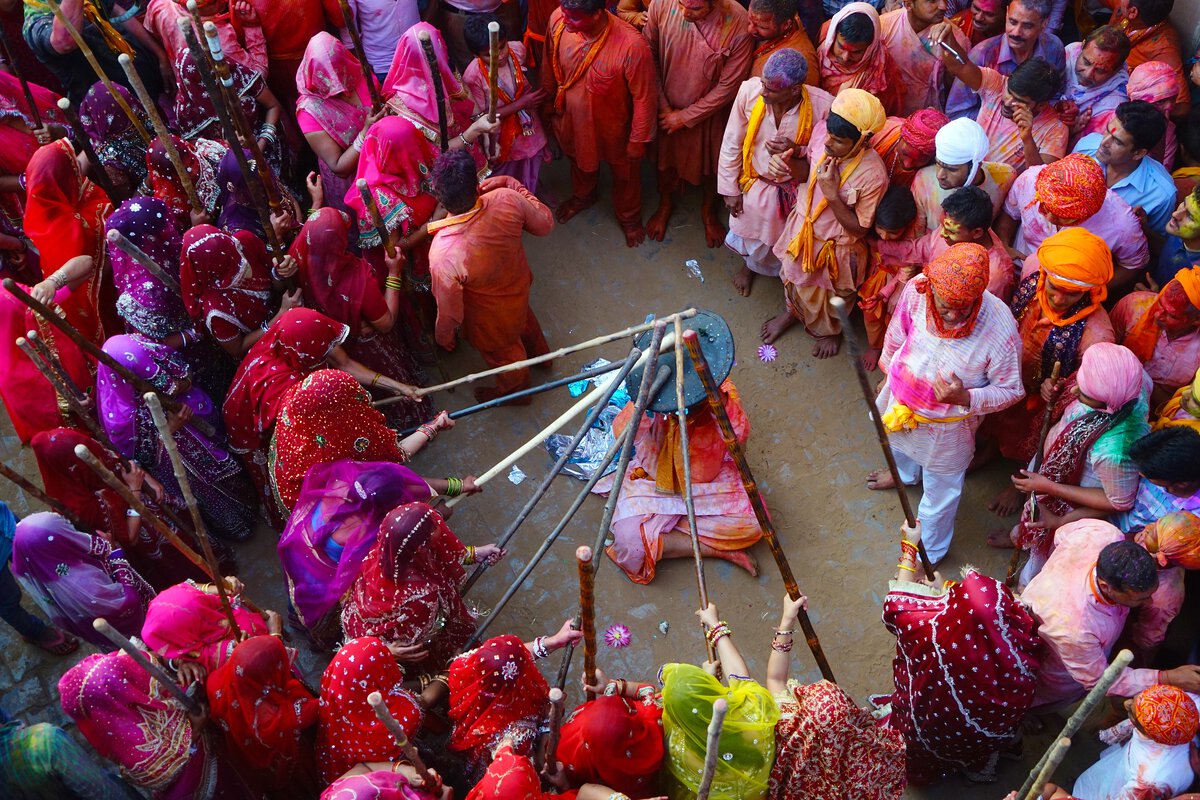
A few days before the main Holi colour festival, the town of Barsana in Uttar Pradesh hosts the unique and lively Lathmar Holi. This tradition, which will take place on 9th March 2025, is a playful re-enactment of a legend from Lord Krishna’s life. According to folklore, Krishna and his friends visited Barsana, Radha’s village, to play Holi, but the women playfully chased them away with sticks, or lathis.
Today, this tradition continues as men from Nandgaon visit Barsana, and women use wooden sticks to chase them in a friendly Holi battle. The event attracts thousands of visitors who come to witness this vibrant and culturally rich celebration.
Holi, festival of colours is celebrated in unique ways across India. Each region adds its own traditions, making the festival even more special. In Mathura and Vrindavan, Holi celebrations start weeks in advance. The Banke Bihari Temple in Vrindavan hosts Phoolon Ki Holi, where flowers replace colours, creating a magical sight. Lathmar Holi in Barsana and Nandgaon takes place on 9th March 2025, where women playfully chase men with sticks. In Jaipur, Udaipur, and Pushkar, Holi is celebrated with royal grandeur, featuring traditional dances and grand processions. In Gujarat, people enjoy Dahi Handi and dance to Garba and Dandiya Raas. Maharashtra celebrates Rang Panchami, extending the colour festivities. In South India, Holi colour festival more cultural, with temple prayers and folk performances.
No matter where you celebrate Holi 2025, the festival unites people with colours, joy, and tradition
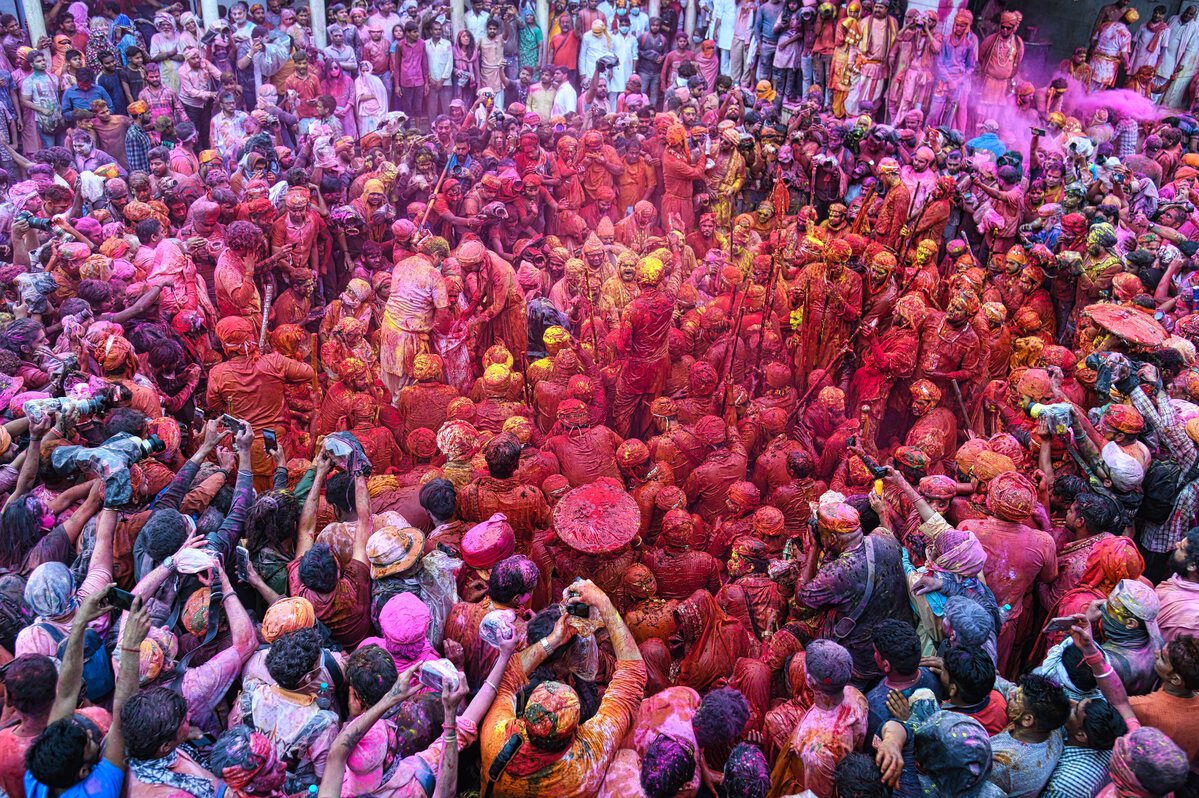
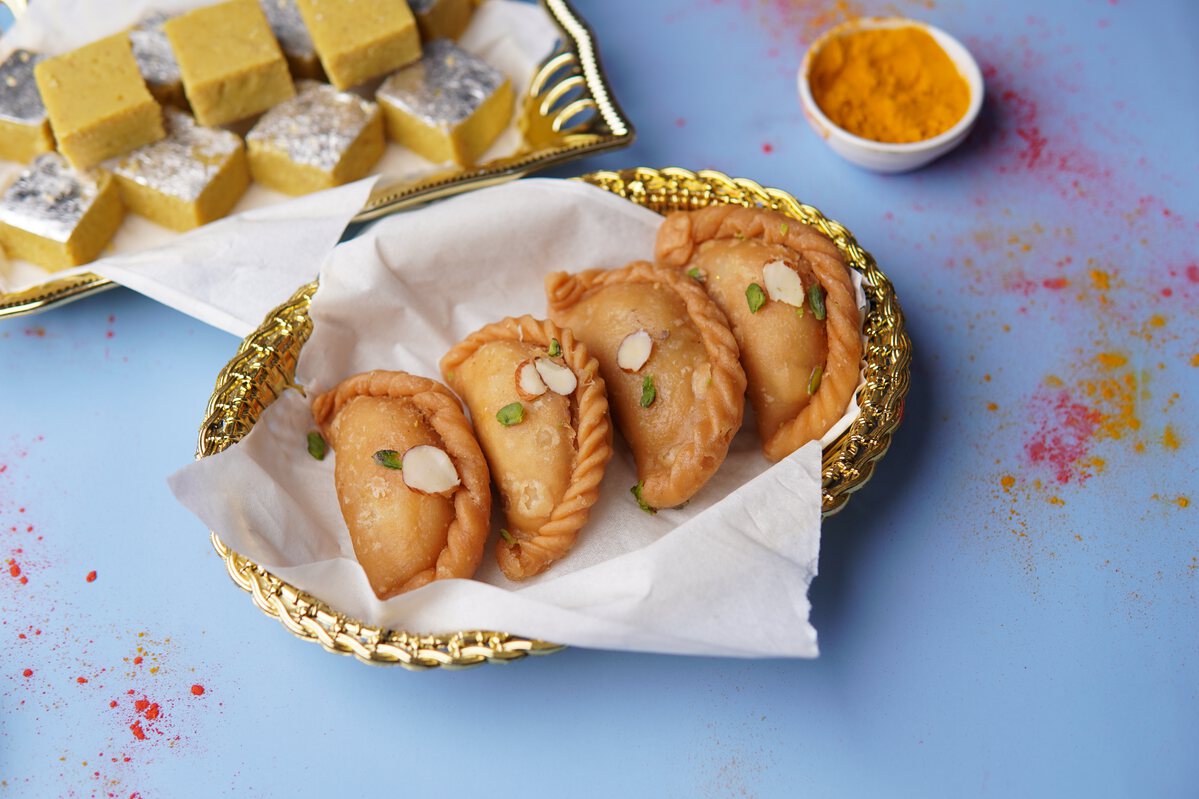
No Indian festival is complete without delicious treats, and Holi 2025 is no exception. The festival is as much about food as it is about colours, with traditional sweets and savoury snacks bringing families and friends together. The aroma of freshly prepared gujiya fills homes, setting the mood for celebration. These deep-fried dumplings, stuffed with khoya, dry fruits, and coconut, are a must-have during Holi. Alongside gujiya, crispy and syrupy malpua, soaked in sugar syrup and served hot, is another festive favourite.
To balance out the sweetness, this colour festival feasts also include savoury delights like dahi bhalla, where soft lentil dumplings are soaked in creamy yogurt and topped with tangy chutneys. Papdi chaat, a mix of crunchy wafers, spiced potatoes, and yogurt, adds to the festive spread. Spicy namakpare and mathri, deep-fried snacks, are served with hot tea, making them perfect for munching throughout the day.
No Holi is complete without thandai, a refreshing and cooling drink made with milk, saffron, dry fruits, and spices like fennel and cardamom. Some even add a festive twist with bhang, making it a signature drink of the Holi festival of colours. Served chilled, thandai is perfect for beating the warmth of the midday celebrations.
Holi celebrations are not just about playing with colours; they are about sharing meals, laughing with loved ones, and relishing the taste of traditional delicacies that make the festival even more special.
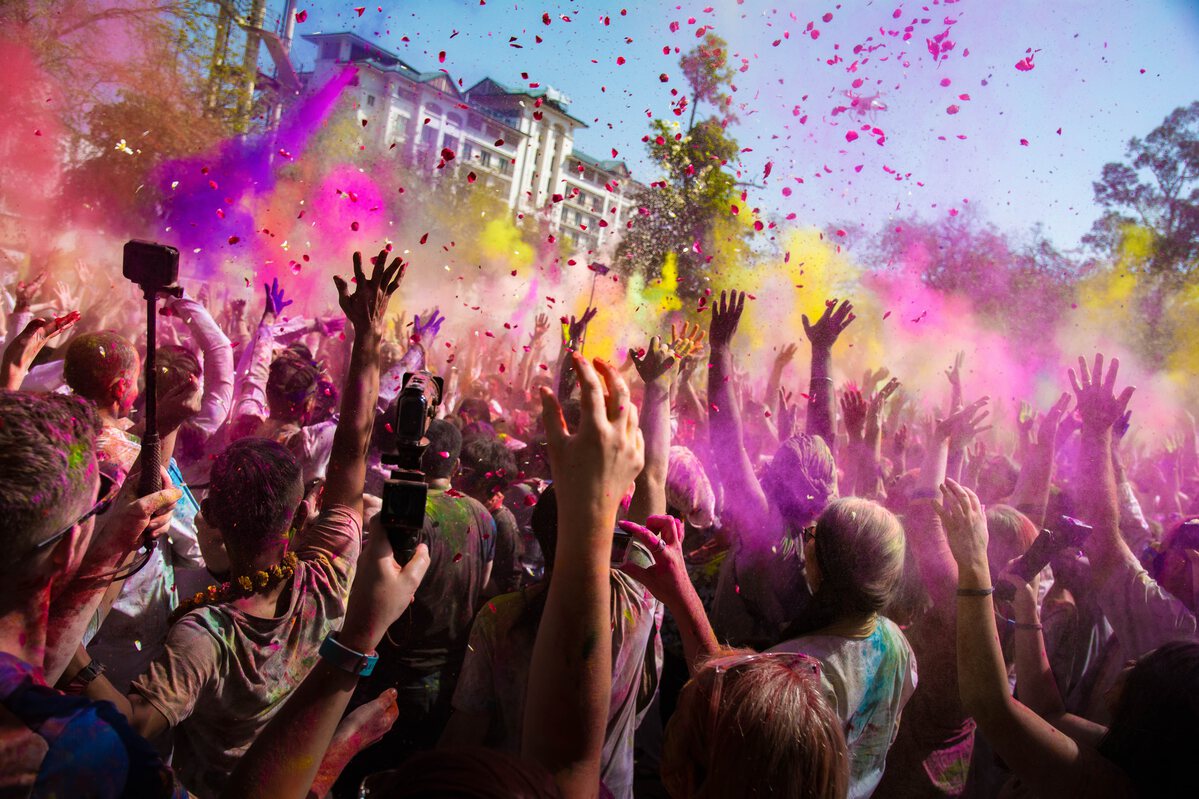
Holi is all about fun, colours, and togetherness, but a little preparation can make your celebration even more enjoyable. Whether you’re playing this colour festival with family, friends, or in a large public gathering, here are some essential tips to ensure a safe and memorable Holi 2025 experience.
With these simple yet effective tips, you can enjoy Holi 2025 to the fullest—immersing yourself in the vibrant spirit of the festival of colours while ensuring a safe and joyful experience.
Conclusion
Holi is much more than just a festival of colours; it's a celebration of love, unity, and the triumph of good over evil. From the playful throwing of colours to the rich cultural traditions and legends, Holi brings people together in a joyous spirit of camaraderie and festivity. As we immerse ourselves in the vibrant hues of Holi, let us also embrace its deeper significance of spreading happiness, forgiveness, and togetherness. May the spirit of Holi continue to inspire us to cherish life's joys and cultivate bonds of love and friendship with one another.
Mahindra Holidays & Resorts India Ltd. (MHRIL), a part of Leisure and Hospitality sector of the Mahindra Group, offers quality family holidays primarily through vacation ownership memberships and brings to the industry values such as reliability, trust and customer satisfaction. Started in 1996, the company's flagship brand ‘Club Mahindra’, today has over 290,000 members , who can holiday at 140+ resorts in India and abroad.